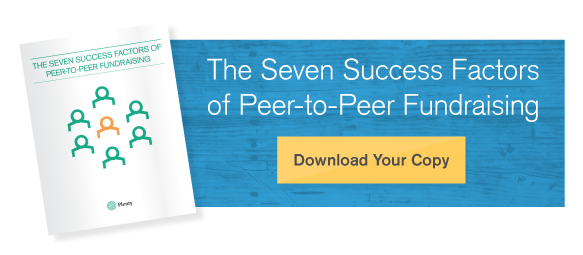Your Cause Is Worth More Than A Dollar A Day
There has been much discussion on the Plenty team about the recent news of Perry Chen launching a website called Dollar A Day to engage the public in nonprofit giving and volunteering. As former CEO and current Chairman of the crowdfunding company Kickstarter, to which 7.1 million people have pledged $1 billion funding 71,000 projects to date, Perry knows a little something about raising funds in a grassroots, innovative way. But we’re not so sure that he has it right this time.
Here’s how it works: Anyone can sign up to make a tax-deductible donation of $30 per month through Dollar A Day. Every day, Dollar A Day sends an email about its daily featured nonprofit and $1 is automatically donated on behalf of each paid subscriber to the day’s featured nonprofit. The next day, there’s a new email describing a different featured nonprofit that receives $1 from each paid subscriber. And so on. Donors can even choose to increase their monthly gift to $31.20 per month to cover processing fees.
Let’s be honest – what nonprofit wouldn’t want a larger, more diversified base of donors, new people hearing about their efforts, and additional fundraising dollars to support their cause? The problem is that Dollar A Day is completely transactional. Once you look under the hood, you realize that what seems like a fantastic new fundraising channel is actually an underdeveloped tool lacking the fundamentals necessary to create long-term fundraising success. Yes, Dollar A Day will send you a check in the mail, but here’s what it won’t give you:
- A second check. Currently, Dollar A Day does not feature the same nonprofit twice. The organization has hundreds of nonprofits already in its queue and, likely, a rapidly increasing pipeline since anyone can suggest a nonprofit to be featured. As a result, it’s unlikely that nonprofits will be featured a second time. So much for “long-term.”
- Predictable, reliable fundraising dollars. A one-time windfall is just that. It’s hard to budget for these one-off donations and foolish to depend on receiving them in the future.
- Data on donors who decide to give to your cause. Donations made through Dollar A Day are processed anonymously, so the check does not come with the names, addresses or emails of donors. You won’t have access to donors at all unless an individual donor contacts you outside of Dollar A Day. Additionally, it’s unlikely that you will receive demographic information for donors.
- Donors who decide to give to your cause. Even if you did have access to demographic information for Dollar A Day paid subscribers who donate, it wouldn’t be meaningful because the paid subscribers do not decide which nonprofits receive donations. Instead, Dollar A Day staff members and volunteers independently choose featured nonprofits. And since Dollar A Day paid subscribers can’t opt in or out of giving to a specific nonprofit, the donations you receive aren’t related to the donor’s interest in your cause.
- More than 75 words. Dollar A Day appeals to the public’s email fatigue by promising that paid subscribers will only receive a “(tiny) daily email” describing the day’s nonprofit. And it really is tiny, ranging from roughly 40 to 75 words. We’re all for a polished elevator pitch, but 75 words seems a little stingy to convert one-time donors into engaged, long-term constituents. Additionally, it’s unclear if nonprofits are meaningfully included in drafting that ultra-important description.
- Donations that reflect donors’ passion for your cause. Dollar A Day paid subscriber donations are made in a set amount. The donation is based on $1 from each paid subscriber (as we’re writing this article there are about 700 of them), less a 4% processing fee. It doesn’t matter how effectively you’ve expressed passion for your cause or how hard you’ve worked to build an effective ask – donations can’t be adjusted to reflect a subscriber’s level of commitment to your cause. Instead, all donations are made based on the same formula and the amount is not affected by an appreciation for what makes your nonprofit unique.
In our minds, Dollar A Day is part of a larger trend we see: a steady move away from relational giving and towards transactional models. Transactional giving, in which nonprofits ask for small amounts or tie gifts into purchases, has some appeal – it is easy to implement, it can attract dollars without regard to your cause, and it avoids the messy business of having to ask. It also minimizes the change you are trying to make in the world.
Your nonprofit is not a packaged goods business. In fact, your organization is likely a nonprofit precisely because the change it is trying to create is hard to sell to consumers. If it were easy to feed the hungry, clothe the naked, and cure the sick, it would be sold in a box at Target.
We love the idea of being able to rapidly scale donations. And it is always positive to spread the word about great causes, increase the public’s engagement with nonprofits broadly, and provide financial support of any size to nonprofits working to create a better world. Like the team at Dollar A Day, we appreciate that well-meaning people are busy and often more open to engaging with nonprofits in a way that doesn’t require daily action. And of course we’re excited that at least 721 people read about 350.org and $692 went toward building a global climate movement today because of Dollar A Day.
The problem is that the transactional giving model is short-sighted. It does not meaningfully address the fundraising needs of nonprofits. And too often, organizations pursue quick fixes and easy money instead of investing in real, long-term stewardship. In our experience, nonprofits looking to increase their impact need quantifiable, sustainable sources of funding that empower them to understand who is giving and why. And then they need to build relationships with donors that influence the amount and frequency of giving.
Transactional giving is quick and easy – not just for you, but for the buyer. But you don’t need buyers, you need donors. Right?
Download our free e-book "The Seven Success Factors" to learn more about fostering long-term fundraising success in your organization!
Share this
You May Also Like
These Related Stories
Need Knows No Season




No Comments Yet
Let us know what you think